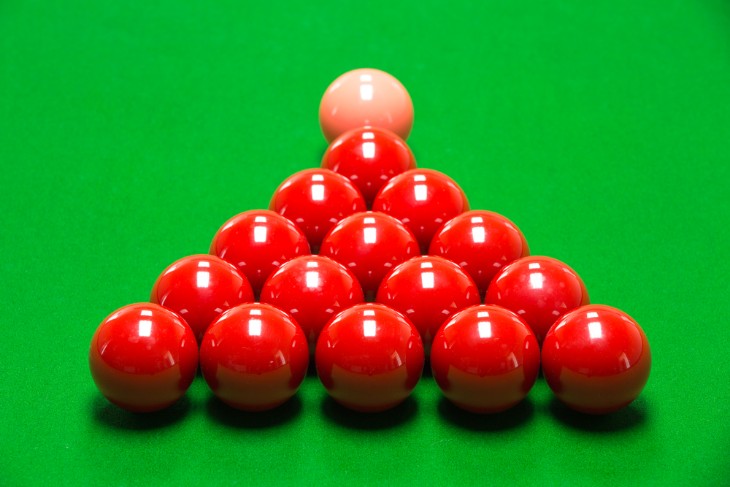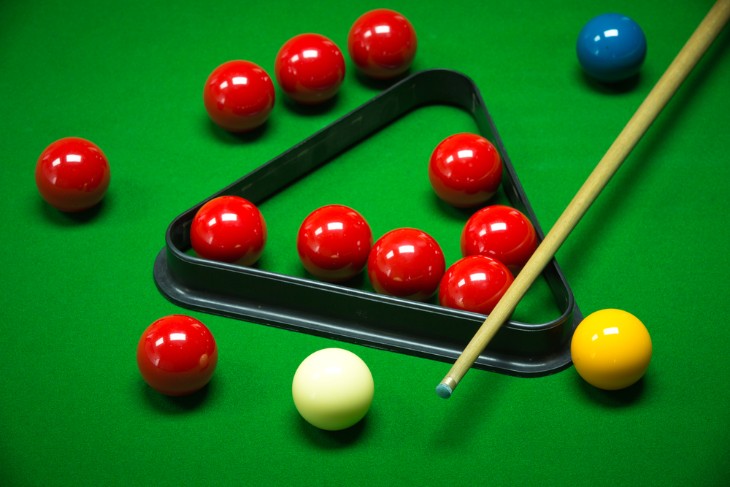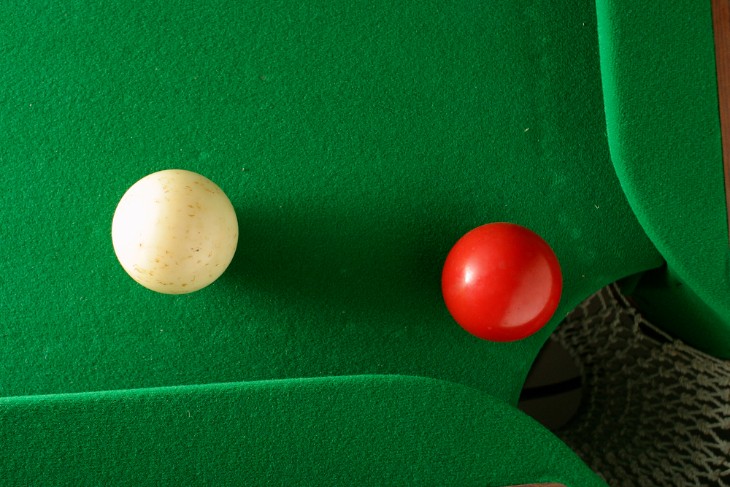- Dimensions and Specifications of Snooker Balls
- The Materials Used in Snooker Balls
- Manufacturing Process of Snooker Balls
- The Snooker Table
- The Importance of Consistency in Snooker Ball Production
- The Science Behind Snooker Ball Construction
- Different Types of Snooker Ball Sets
- The Artistry Within Snooker
- Conclusion
Dimensions and Specifications of Snooker Balls
Snooker balls adhere to stringent dimensional and weight standards to enable consistency and predictability on the table. The cue ball measures 52.5mm in diameter, typically weighing between 156-170gms. The object balls are marginally heavier at 170-178gms with the same diameter. Minor permissible variations exist in ball weights but competitive play demands maximal conformity.
The cue tip chalk applied on shots needs vigilant monitoring as excessive buildup on the cue ball can create friction issues. Players may request ball cleaning between frames if unsatisfied with ball responsiveness on the table. Referees inspect balls before matches to guarantee standard specifications.
- Object balls have branding logos painted on them indicating the manufacturer. Cue balls are always left unmarked.
- Ball surface finishes and polishing methods have become more advanced, assisting smoother rolls and reduced directional throw.
- Snooker balls striking each other should generate an audible cracking sound indicating solid contact. Lack of sharp audible-signal hints at underlying issues.
Adhering to exacting dimensions and weight criteria minimizes unwanted ball deflections arising from manufacturing variations. This empowers players to concentrate purely on technique, touch and strategy when plotting shots. With ball behavior predictability maximized, snooker morphs into an intricate chess-like contest demanding immense mental fortitude.

The Materials Used in Snooker Balls
The pursuit of durability and uniformity led snooker balls transitioning from ivory to phenolic resin over the 20th century. Being a thermoset plastic, resin retains shape permanency and affords constructional integrity. Additionally, its capacity for high-gloss polishing assists slick ball movements upon contact.
However, slight materials advancements continue to this day for enhanced friction and directional consistency. Mixing in minute graphite quantities has allowed refined control over ball deflection angles post impact. The chalk-tip contact phenomenon has also received research focus for increased control predictability within shots.
- Saluc manufactures the Aramith range of phenolic resin snooker balls endorsed across professional events.
- Resin compound percentages can be tweaked before curing to alter structural density and surface hardness.
- Moisture absorption remains an issue affecting ball speed and friction levels during gameplay. Optimized resin compounds help minimize such impacts.
The collective quest for excellence by table manufacturers and governing bodies has progressively enhanced snooker ball quality. But ultimately, the game highlights phenomenal human ability at directing sphere projectiles with precision through contact deflection physics. And the balls form the medium encapsulating the athletic artistry, mental fortitude and visual finesse satisfyingly harmonized within snooker.
Manufacturing Process of Snooker Balls
Snooker ball production happens through precision industrial procedures seeking minimal dimensional deviations. Molded phenolic resin compound is first heated and set into spherical casts. Stringent quality assurance testing subsequently verifies weight, diameter and roundness compliance before surface polishing.
However, minute subsurface air pockets occasionally plague resin curing outcomes. Imperfections like these can detrimentally alter the balls’ structural density. Hence, manufacturing demands continual vigilance aided by imaging techniques that discern invisible issues. Advancements in quality testing now assist evaluating resin homogenity down to microscopic scales.
- Tolerances today allow just 1-2 grams in weight variations and up to 10 microns diameter deviation.
- High precision NC lathes cut the balls to exact spherical dimensions before hand-finishing by veteran craftsmen.
- Research continues into novel coloring agents and lacquering solutions to retain ball vividness over prolonged use.
The contemporary snooker ball embodies astonishing craftsmanship finesse delivering uniformity at nano-scale dimensions. Players can wholly trusts their equipment, much like elite sportspeople relying on precision racquets or golf-clubs reflecting iterative advancements down the decades. Snooker balls have accordingly benefited through material science progression in-step with growing sports professionalism today.
The Snooker Table
The snooker table forms the centerpiece for this intricate cue sport. Typically measuring 12 feet by 6 feet, snooker tables are covered by a green baize cloth to provide the right amount of friction for controlled cue ball movement. The pocket openings are cut precisely to pose a suitable challenge when players attempt to pot the balls. The exact table dimensions and cloth quality significantly influence the gameplay dynamics and overall snooker experience.
Snooker tables require dedicated maintenance to retain their playability. The baize cloth is vacuumed regularly to remove chalk marks, dust, and other residues which can affect ball behavior. The cloth tension and cushion rubber firmness also need periodic checking to preserve responsiveness. Tables may need re-covering every few years as the cloth wears down from prolonged use.
- Snooker tables for amateur play can have slightly smaller dimensions while professional tournament tables adhere to fixed dimensions.
- The optimal temperature range for snooker tables is between 21°C to 24°C with 40-60% humidity levels. This helps maintain cloth responsiveness.
- High-end bespoke snooker tables crafted by specialized firms can cost over $10,000 owing to premium materials and intricate craftsmanship.
The synergy between the snooker table and the balls played on it defines the sport's technical sophistication. The table specifications complement the balls' size and weight to foster intricate play. For instance, the pocket width versus ball diameter ratio forces accurate potting skills. Additionally, the table's responsiveness amplifies the balls' playing characteristics. Factors like ball-to-ball friction, directional throw post impact, rebound angles, etc. are all profoundly influenced by the snooker table construction.
The Importance of Consistency in Snooker Ball Production
Consistency denoting unwavering dimensional, weight and friction conformity remains the holy grail across snooker ball manufacturing. Without it, player technique adaptation ball-to-ball and shot-to-shot becomes unavoidable. Cumulative gameplay unpredictability generated as things progress can potentially modify entire match outcomes.
Therefore, maximizing consistency in ball production eliminates equipment-side variability altogether. This rightly keeps the spotlight firmly on the sporting contest - gauging player temperaments under severe pressure situations with a cue in hand.
- Match referees rigorously check balls before tournament frames begin, to reassure players.
- Heated debates have happened historically surrounding acceptable ball consistency thresholds.
- Recent advances in resin compound engineering have significantly improved consistencies over the past decade.
The exacting demands placed upon snooker balls reflect the sheer meticulousness innate to the larger sport itself. In a game already requiring tremendous mental composure, granting players peace of mind regarding their primary equipment forms the non-negotiable starting point. From there onwards begins the psychological sparring over the green baize arena demanding absolute precision under the most intense pressure.
The Science Behind Snooker Ball Construction
While the conversion to phenolic resin created more consistency in snooker ball performance, there remain complex physics and chemistry phenomena influencing their motion across the table. Snooker engineers must grapple with concepts like surface friction, elasticity momentum transfers and shear spin or ‘squirt’ when aiming to refine construct specifications further.
The nature of collision dynamics and resultant scatter patterns as balls smash into each other constitutes an entire specialist domain today. High-speed digital video capture has accelerated research around contact patch adhesive friction changes, sliding rotations, recoil formulas and post-impact kinetic energy transfers occurring within microseconds. Therein lies snooker’s hidden sophistication far beyond just striking a white ball into a group of reds!
Predictive computational models supported by practical robot simulations now assist representing virtual ball interactions with stunning verisimilitude. The data derived helps iterate ball surface patterning for favorable after-impact deflections and minimized sideways throws. This is crucial for players to develop their innate 'feel' for shots.

Different Types of Snooker Ball Sets
Recreational snooker enthusiasts can choose between varied snooker ball sets depending upon intended usage spans, storage needs and refresh cycles. Professionals mostly prefer the rotation mechanism of combining eight sets - 56 balls in total. This granular shuffle system allows each ball remaining underneath match lights only for two frames before resting. Such rotations among ball sets significantly expands their active duty life cycles.
Beginner sets with fewer balls help ease initial standalone practice before graduating to full 22-ball setups. More balls generate increased clutter upon early coping difficulties. Hence, starter builds featuring 12 red balls offers staged learning. Special training balls with in-built sensors also exist now in the market that provide real-time feedback upon strikes to measure force, angles and topspin.
- Smaller table variants like Pool tables permit crossover usage of standard snooker balls.
- Regular household humidors effectively assist long-term snooker ball storage against material degeneration.
- Beyond standard cue-tip chalk, additional pre-shot cue powdering products now sell commercially with friction-enhancing claims.
The Artistry Within Snooker
The beauty of snooker emerges from its perfect equilibrium between visceral human drama and clinical game mechanics. One witnesses artistically outrageous shot-making belying comprehension coexisting with seemingly robotic matchplay stretching across 35 tension-filled frames. The rivers of mental resilience, imaginative daring and steely nerves ebb-n-flow around the green arena.
Yet snooker also signifies the metropolitan cultural zeitgeist blending etiquette and entertainment for television audiences. This stylish fusion has propelled iconic personalities like Alex Higgins, Jimmy White and Ronnie O’Sullivan into British public celebrity via the game’s soap opera like emotional rollercoasters. Their flawed genius created timeless sporting memories upon the snooker table canvas through the years befitting grand theater.
Thus the artistic impulses within snooker manifest multifariously - inside a player’s heart yearning self-expression; within fans deriving joy, inspiration or escapism; inside cultural conversations acknowledging its role linking community spirit. The 22 balls thereby transform into inanimate performers directed by human minds and muscles in crafting endless moments of dramatic beauty.
Conclusion
In summary, snooker as a sport showcases tremendous interplay between human skill elements and equipment engineering finesse enabling the overall drama. The balls form the central apparatus players maneuver around the table housing within their structure the cumulative craftsmanship effort striving towards absolute consistency. Precision ball engineering assist channeling technical prowess onto the green battleground while minimizing ambient variability that impacts sporting outcomes.
what are snooker balls made of – Phenolic thermoset resin compounds engineered with cutting-edge specifications to enable maximum game control consistency for players. This remains the dominant material now used in snooker ball manufacturing at all levels – professional or amateur. Understanding the transition towards resin from traditional ivory lays bare the evolutionary technical strides undertaken by the sport keeping pace with modern sporting ideals expecting uncompromising equipment quality standards.
For more information:




.webp)


 (1).webp)




















